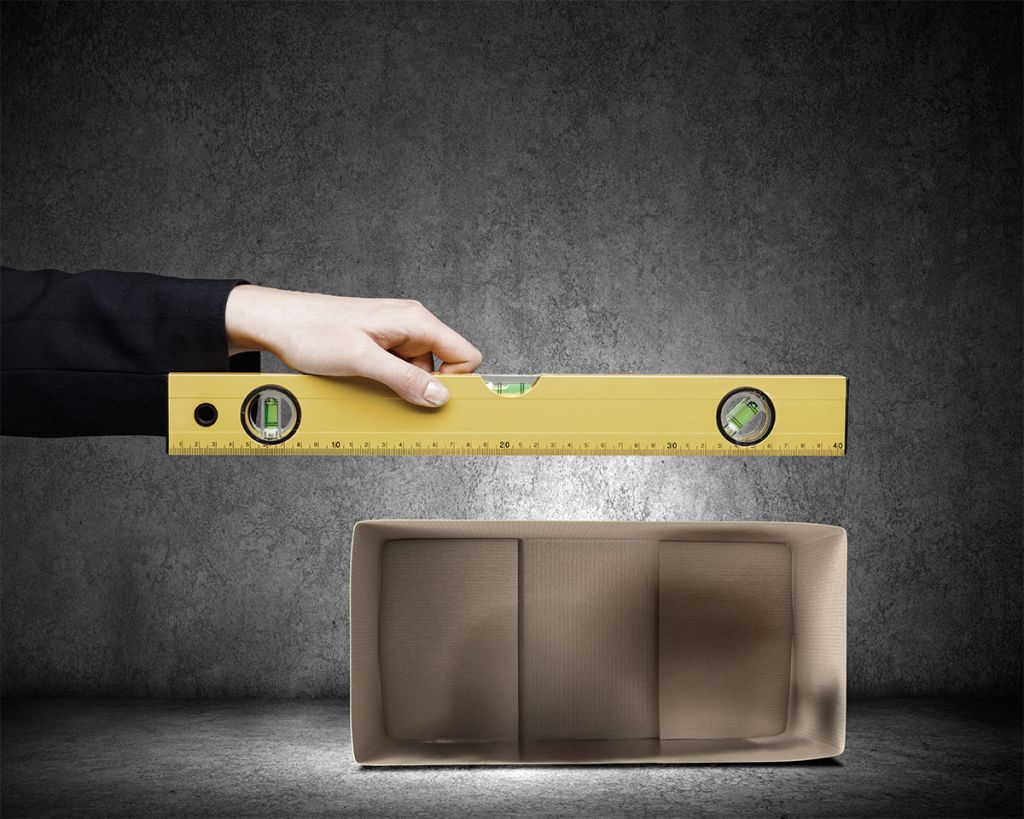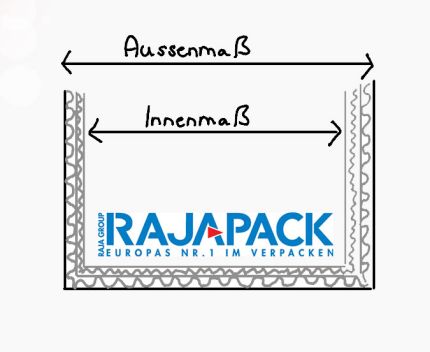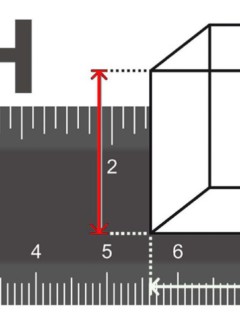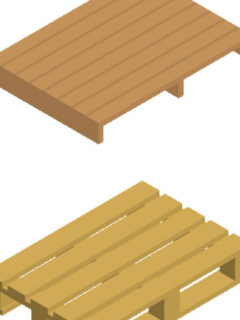In logistics, every centimetre counts – which is why it is crucial to be able to calculate the volume precisely. In this blog article, you will learn how to correctly determine the carton volume, what the difference is between internal and external dimensions and how cubic centimetres can be converted into litres or even kilograms. We also clarify the important difference between volume and volumetric weight, which plays a key role in calculating shipping costs. This knowledge is essential for anyone who wants to utilise storage space efficiently and reduce shipping costs.
Why do I need to know the volume of a carton?
Calculating the volume of a carton is one of the basics of efficient logistics – whether in the warehouse, in shipping or in online retail. Because only those who can calculate the exact volume can also
-
assess whether a product will fit inside,
-
optimise the use of storage space,
-
and realistically calculate the shipping costs.
Sound familiar? Right – that’s what we learnt in maths lessons. But if it’s been a few years since your last geometry lesson, that’s no reason to panic. Instead of a test, today we’re giving you a little refresher – with practical relevance, of course. In this article, we’ll show you how to calculate the volume of your boxes and how to use this knowledge cleverly to improve warehouse processes and reduce transport costs.
So – get out your calculator and get started!

The formula for calculating volume
The volume of a carton is calculated by multiplying length × width × height.
Volume = length × width × height
All dimensions must be given in the same unit – e.g. millimetres, centimetres or metres. If the calculation is made in centimetres, the volume is given in cubic centimetres (cm³); for metres, the volume is given in cubic metres (m³).
In the packaging sector, centimetres are usually used:
Volume of a carton (cm³) = length (cm) × width (cm) × height (cm)
Why is this important?
The volume formula forms the basis for many logistical decisions. If you know the exact space requirements of your packaging, you can load pallets correctlymore efficiently and calculate shipping costs more accurately. In day-to-day practice, this simple calculation supports optimum packaging planning – especially for large quantities or different carton formats. It also helps to avoid over- or undersizing, which saves both space and costs.
Inner vs. outer volume of a carton
If you want to optimise your packaging, you should distinguish between two types of volume:
-
Inner volume: Based on the inner dimensions of the box. It indicates how much product fits in the box.
-
Outer volume: Calculated from the outer dimensions. This is larger the thicker the box walls are. It is useful for warehouse planning and transport organisation.
What is the inner dimension and what is the outer dimension? Let us explain here: Length – Width – Height : Finding the right cardboard box in the right cardboard quality
Example:
A single-wall cardboard packaging from RAJA® with the dimensions 55 × 40 × 30 cm:
55 cm × 40 cm × 30 cm = 66,000 cm³
→ The internal volume is 66,000 cm³.
Why is this important?
In practice, the internal volume influences the choice of product and the filling materialwhile the external volume determines how much storage space is required or how many boxes fit on a pallet. This distinction is particularly relevant when optimising shipping or when loading containers, trucks or racking systems. Only those who know both values can optimise transport and warehouse logistics. The external volume is also a decisive factor when calculating shipping rates.

How do you convert the volume into litres?
In addition to cm³ and m³, litres are a common unit of measurement for volume. The conversion is very simple – you just need to know the following relationships:
-
1 cm³ = 1 ml
-
1000 cm³ = 1 litre
-
1 m³ = 1000 litres
Example:
For our cardboard box measuring 55 × 40 × 30 cm:
66,000 cm³ = 66 litres
Note: One centimetre cube corresponds to one millilitre of liquid – so the contents of a box can easily be converted into litres.
Why is this important?
The conversion to litres is particularly helpful if you are packing liquids or pourable products. Many products are labelled in litres – so it makes sense to compare the internal volume of the carton with this. When determining the requirements for filling material (e.g. padding chips or paper), the volume in litres is often more intuitive and practical. It also makes it easier to communicate with customers or partners who work with standard metric sizes such as litres.
Convert volume to kilograms?
⚖️ 1 litre of water = 1 kilogramme – this rule of thumb only applies to water. Other liquids have different densities:
-
Milk is denser than water → weighs more.
-
Oil is less dense → weighs less.
So if you want to calculate the weight of a carton based on its volume, always take the density of the filling material into account.
Why is this important?
The conversion of volume to weight is a key aspect when transporting heavy or liquid goods. Especially in logistics, maximum weights for pallets or freight containers must be adhered to. If you know how many litres of a product fit into a box and how much a litre weighs, you can quickly estimate the total weight. This is also important for compliance with legal regulations, e.g. for hazardous goods or lorry transport.
Volume weight ≠ Volume
The volume of a carton is often confused with the dimensional weight. This is a calculation parameter used by parcel services to determine tariffs. It refers to the space required in the means of transport (lorry, plane, train, etc.), not to the actual weight.
The difference:
-
Volume: Simple length × width × height
-
Volumetric weight: More complex, as factors and conversion coefficients are used, e.g. the “cubic factor” of a consignment.
Both values are directly related:
The smaller the volume, the lower the volumetric weight – and the lower the shipping costs.
Tip: You can save on shipping costs by optimising your packaging. We’ll show you which products you can use to achieve this!
Why is this important?
The volumetric weight often determines how much shipping actually costs – especially for light but bulky consignments. If you know and take into account the volumetric weight, you can select packaging that optimises the size-to-weight ratio. This can reduce shipping costs and avoid surcharges. In e-commerce in particular, this is an important lever for reducing the costs of regular shipments.
Volume of a carton in international shipping
When shipping goods across borders, the carton volume becomes a particularly critical key figure. In addition to the classic factors such as weight or number of items, the volume weight is also decisive for freight costs in international transport – especially in the air and sea freight sector.
In international logistics, different conversion factors apply in some cases.
-
Volume weight in air freight: The standard formula used by many carriers (e.g. DHL, UPS, FedEx) is: air freight volume weight = (length × width × height in cm) ÷ 6000. Some providers use 5000 or 4000 as an alternative divisor – however, 6000 is the international standard value according to the IATA recommendation.
-
In maritime transport: Sea freight usually works with cubic metres.usually works with cubic metres. 1 m³ = 1000 litres.
This means that even a light carton with a large external volume can be more expensive to ship than a heavier but compact carton.
Example:
A cardboard box measuring 60 × 50 × 40 cm has a volume of 120,000 cm³ = 120 litres
→ Air freight volume weight: 120,000 ÷ 6000 = 20 kg
If the box only weighs 5 kg in real terms, you still pay for 20 kg if the rate is based on volumetric weight. The correct handling of the volume is therefore worth money here!
Why is this important?
-
Costing certainty: Avoid expensive surprises with accurate volume and weight data.
-
Documentation & customs data: Volume data is often mandatory for delivery notes, freight documents and customs declarations.
-
Optimised packaging selection: Anyone operating an international shipping business should check carton formats for the best ratio of tare weight to volume.
Tip for frequent shippers: Use volume-optimised export cartons or individual packaging to avoid air in the carton – and therefore costs.
Find cartons with the right volume now
Now you know how to calculate the volume of a carton – time to choose the right model for your company!
At RAJAPACK you will find over 1,200 environmentally friendly carton formats that are immediately available from stock.














